|HOME
|
|「福島では数千人が放射能被爆に直面している」「その多くが子供たちで、赤ん坊がもっとも高いリスクにさらされている」(米ABC News) |
「福島では数千人が放射能被爆に直面している」「その多くが子供たちで、赤ん坊がもっとも高いリスクにさらされている」(米ABC News)
2013-11-11 00:23:42
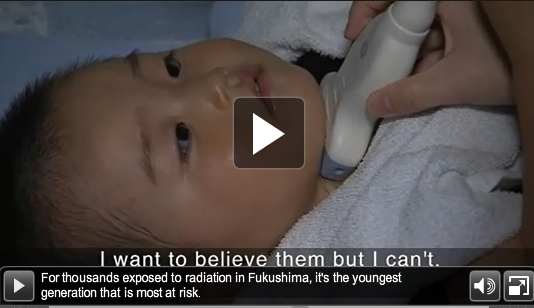
 福島第一原発の周辺の高濃度放射能汚染の立ち入り禁止地区で、一人の男が、希望のない、かつやめるにやめられない使命感でさまよっている。彼の最愛の7歳だった娘は、2011年3月11日の東日本大震災で行方不明のままになっている大熊町唯一の未発見者なのである。警察や市当局などはとっくに捜索をやめている。しかし、木村ノリオは、やめていないし、今後もやめないだろう。
福島第一原発の周辺の高濃度放射能汚染の立ち入り禁止地区で、一人の男が、希望のない、かつやめるにやめられない使命感でさまよっている。彼の最愛の7歳だった娘は、2011年3月11日の東日本大震災で行方不明のままになっている大熊町唯一の未発見者なのである。警察や市当局などはとっくに捜索をやめている。しかし、木村ノリオは、やめていないし、今後もやめないだろう。
映像はこちら: http://www.abc.net.au/foreign/content/2013/s3884420.htm
「ユカを見つけるのはとても難しいということは、俺もわかっているんだ。でも、捜すことをやめることはできない。やめる時はユカを見つけた時か、 俺が死んだ時だ」。津波犠牲者の父親である木村は、たぶん、ユカを見つけられないだろう。しかし、彼はそれでも、人のいない海岸沿いを重い足取りで歩いている。わずかでもユカの手掛かりを求めて・・・
立ち入り禁止地域からは十分に距離を保っている民間の小児病院で。両親たちが不安げに、小さな子供たちを抱きしめて、医師の診察を食い入るように見つめている。診察によって、甲状腺ガンが見つからないように祈りながら。地元の自治体が実施した検査では、福島地域の子供たちの甲状腺ガン発症を警告する結果が出たが、原子力の専門家と称する人たちは、子どもたちに発見された腫瘍と、放射能の影響について明確な関係を見出すことに躊躇している。しかし、親たちは強い関心を持ち続けている。
「福島の医者たちは、原発の影響は、そんなにすぐには表れないので、子どもたちの腫瘍は、原発事故とは関係ないという。しかし、そうした説明は非科学的と思う。とても我々には受け入れられない」。チェルノブイリの子供田日Cをボランティアで診察してきた元甲状腺外科医の AKIRA SUGENOYA は語る。
津波が襲った日から、東北、福島地区の取材を続けている北アジア担当記者のMark Willacy が、徐々に明らかになっている原発の人々への影響をあらゆる角度から取材した。彼は ‘The Boy On The Bike’ や ‘The Fukushima Syndrome’. の作品によって、すでに高い評価を得ている。彼は今、ガンにおびえる人々の調査のために現地に戻った。ガンの症例は、放射能地域の周辺で顕著であり、特にその犠牲者は子供たちである。
____________________________
http://www.abc.net.au/foreign/content/2013/s3884420.htm
Further Information
Mark Willacy’s book Fukushima is now available in book stores and online – and is a finalist in the 2013 Walkley Awards for Excellence in Journalism.
 ______________________________
______________________________
Transcript
http://www.abc.net.au/foreign/content/2013/s3884420.htm
WILLACY: It’s been more than two and a half years since the earth shook and the waves came, and like Chernobyl and Three Mile Island, Fukushima became an infamous place name for nuclear cataclysm. It’s been a huge and devastating drama but it’s fair to say it’s been the defining story during my time here in Japan. [archive footage]: “As you can see it picked up this giant fishing trawler and just dumped it on the dock”. I’ve witnessed the awesome natural power of the earth and sea.
[archive footage]: “Thousands are dead here there’s no doubt about it. It’s just a matter of trying to find the victims but I’d imagine that the vast majority will never be found”. I’ve been stunned by brazen and often clumsy efforts to cover up and lie about the effects and extent of the radioactive damage. [archive footage]: “But a company that was once regarded as a champion of industry is now denounced around here as a wrecker of homes and livelihoods and a symbol of corporate greed and cover ups”.
And amid the loss I’ve also seen some happy endings. [locating the boy on the bike in his classroom] And as I prepare to head back in one last time before I leave this posting, it’s abundantly clear many aspects of this epic, unfolding tragedy are yet to be written – the nuclear fallout will see to that. This will be my 23rd trip to Fukushima since the disaster and my 5th time inside the no-go zone, so I know the drill – and like previous visits it’ll be fleeting, necessarily so. [driving into the no-go zone] “Well we’ve just crossed through the checkpoint into the nuclear no go zone, that’s the 20 km exclusion area around the shattered Fukushima reactors.
And we, like the people who used to live here, are only allowed in for five hours. That’s because the radiation levels are still very high”. This is Okuma – once home to eleven thousand people. Now it could easily be the set of a Japanese science-fiction movie. Here, in a well-to-do part of town, spacious new homes are abandoned and empty and are starting to decay. Cars remain where they were parked in 2011. A town that once thrived on the jobs and power of the nuclear plant next door is now a post-apocalyptic radioactive ghost town, one with a very determined ghost hunter.
NORIO KUMURA: ““Because the body of Yuna has not yet been found I come here to search. I always have inner conflict. Some say what I am doing is a self -destructive act. Even though I can’t find her now, if I never find her, I’ll always feel sad. I am determined to find her, but frankly speaking this is more for myself”.
WILLACY: Norio Kimura is on a dogged, one-man mission improbable – to find the remains of his seven year old daughter – the only tsunami victim from Okuma still not accounted for.
NORIO KUMURA: “This is where I can come to feel closer to my three dead family members. If possible, I want to return here before I die”.

WILLACY: On the 11th of March 2011 a tsunami five storeys high crashed over this shoreline. It destroyed every home in this seaside suburb of Okuma town, triggered meltdowns at the nuclear plant just 2 km up the coast and it swept away three of Norio Kumura’s family.
NORIO KIMURA: “We are allowed to return home once a month. And because the body of Yuna has not been found yet I come here to search. I am determined to find her. Yuna’s name comes from the sea. It means calm ocean”.
WILLACY: Norio Kimura and his older daughter Mayu were on higher, safer ground – the rest of his family were not. The body of Norio Kimura’s father was recovered shortly after the disaster, while the remains of his wife were later found floating 40 km out in the Pacific. Despite the high radiation levels here near the plant, he’s vowed never to abandon the search for his youngest child Yuna.
NORIO KUMURA: “Even though people tell me that I can’t go in because of the radiation, my sense of guilt that I can’t find Yuna doesn’t go away. I haven’t submitted the death notification for Yuna yet. She’s the only missing person left from Okuma. It remains that way”.
WILLACY: Norio Kumura will seize upon any lead that presents. As we filmed him, a man combing the coast not far from where Yuna was swept away finds a bone he thinks is human. MAN: “I think you’d better ask the police to investigate this”.
NORIO KUMURA: “I don’t know what kind of bone it is so I won’t rejoice just yet. If it’s found to be a human bone it would encourage me to keep searching”.
WILLACY: And as a father trudges on in search of clues to a little girl lost, the mothers of Fukushima are holding on ever so tightly to their little daughters and sons – hoping some things won’t be found. Some of the children here at Hirata Hospital weren’t even born when the nuclear disaster erupted but that doesn’t mean they’re out of harm’s way.
TOMOKO KOIKE: “The people who have information are the authorities. I want them to disclose more information. We do not know the real situation. We don’t know what’s going on. I can’t trust them”. WILLACY: Tomoko Koike is the mother of 4 year old Saki and 2 year old Yuta who was born just a fortnight before the Fukushima reactors melted down.
TOMOKO KOIKE: “My children had never contracted influenza before, even without vaccination. But they contracted it last year. Their vulnerability to illness has increased. When I think about their future I am depressed and often feel anxiety”.

WILLACY: Mrs Koike has brought her kids in for yet another series of radiation tests. She’s one of many parents worried about thyroid cancer. Her children have already been screened and cleared in tests run by the Fukushima local government – but a follow up screening here at the private Hirata Hospital, revealed cysts on the thyroid gland of 4 year old Saki.
TOMOKO KOIKE: “A couple of cysts were found. I was very shocked. I don’t know whether the examination by the prefecture was sloppy, or that she wasn’t examined properly.
DR AKIRA SUGENOYA: “When I look at Fukushima now, the number of thyroid cancer cases in people under 18 is quite high. It’s happening fast”.
WILLACY: Akira Sugenoya knows not to jump to conclusions over links between the Fukushima radiation and thyroid cancer, but he’s deeply concerned by what he’s seeing. After all, he’s a former thyroid specialist who spent five years operating on hundreds of Chernobyl children suffering from thyroid cancer.
DR AKIRA SUGENOYA: “I care because I went to Chernobyl and I saw each child so I know the pain they went through”. [addressing school children] “It is very regrettable that the Fukushima nuclear plant accident happened in Japan”.
WILLACY: Now mayor of Matsumoto City, Akira Sugenoya believes Japanese children won’t fall victim to thyroid cancer to the same extent as Chernobyl where 6,000 children were found to have contracted thyroid cancer.
DR AKIRA SUGENOYA: [addressing school children] “ I think from now on our problems will increase”.
WILLACY: But there’s clear evidence rates have risen. Before the disaster in 2011, the rate of thyroid cancer was between one and two cases in every million children. Now, with about two hundred thousand children screened so far in government ordered tests, there have been 18 confirmed cases of thyroid cancer and 25 suspected cases – an unusually high rate.
DR AKIRA SUGENOYA: “The doctors in Fukushima say that it shouldn’t be coming out so soon, so it can’t be related to the nuclear accident. But that’s very unscientific, and it’s not a reason we can accept”.
WILLACY: Other Chernobyl veterans, like doctor of internal medicine, Minoru Kamata, also believe the spike in cases should be thoroughly investigated.
DR MINORU KAMATA: “The point is what when thyroid cancer was found in a few children last year, the Fukushima health investigation committee immediately declared that it was unrelated to the nuclear accident. That attitude is wrong for a doctor or scientist. I’m saying there might be a relationship – so we should speed up screenings and carry out high quality examinations, which so far are lacking”.
WILLACY: Not everyone is worried. Far from Fukushima, Professor Geraldine Thomas is a specialist in the molecular pathology of cancer in Imperial College London. She also helped establish the Chernobyl Tissue Bank which analyses samples from people exposed to radiation, after the nuclear disaster in Ukraine in 1986.
PROFESSOR GERALDINE THOMAS: “Following Fukushima I doubt that there’ll be any rise in thyroid cancers in Japan and this is simply because the amount of radio-iodine that was released post-Fukushima was much, much less than released post-Chernobyl. Absolutely if you look for a problem, especially if you’re using incredibly sensitive technique which is what the Japanese are actually doing, you will find something. You will find part of that problem and you have to be careful you don’t over interpret that and worry people unnecessarily”.
WILLACY: Professor Thomas believes that unnecessary worry and fear has driven parents to make unnecessary choices.
PROFESSOR GERALDINE THOMAS: “And even post-Fukushima some women were having abortions because they were worried. The radiation would have done nothing to their prospective offspring, but the fear that that radiation was going to do something, tipped them over into having an abortion which nobody likes to know about.
MEGUMI MATSUMOTO: “While I am alive and my son is alive radiation will not disappear. It will remain. That’s what I’m worried about”.
WILLACY: Back at Hirata Private Hospital, another mother Megumi Matsumoto, has brought her 2 year old son Rui in for a thyroid screening.
MEGUMI MATSUMOTO: “I’ve never received a notice for a test from the prefectural government so I had to take action by myself and bring my boy here to have a test”.
WILLACY: The critical point about thyroid cancer is that if it’s detected early enough, it can almost always be treated successfully so it’s important the authorities are transparent upfront. With parents like Megumi Matsumoto they’ve been anything but candid.
MEGUMI MATSUMOTO: “I want to believe them but I can’t. I am worried about what will happen in the future”.
WILLACY: As so often has been the case as I’ve covered the Fukushima story, secrecy is the default position of the authorities. The Fukushima government refused our formal requests for age breakdowns and more detailed information concerning thyroid cancer victims since March 2011.
DR AKIRA SUGENOYA: “I don’t know why, but they’ve hidden it. They don’t show the data clearly so it arouses suspicion. I’m still very angry. It’s because I’m a thyroid specialist and I’d like to know what’s happening next”.
DR MINORU KAMATA: “It was disclosed that the Fukushima health investigation committee was having several secret meetings. Up until now, I feel the response to this issue has been unthinkable for a democratic nation”.
WILLACY: When Fukushima’s local governing authorities are not being accused of a cover up, they’re being accused of staging very visible, very expensive and very elaborate exercises in futility. Across large open tracks of land and in isolated hotspots, heavy machinery is stripping top soil in an effort to decontaminate the earth. Of course it’s an impossible task. This is largely a mountainous and heavily forested region and no one knows precisely where the contamination ends.
KAZUYA TARUKAWA: “Farmers work in the contaminated soil from sunrise to sunset every day. We inhale contaminated dust and I think in five, ten years there will be some kind of effect on the body”.
WILLACY: Kazuya Tarukawa grows organic rice, fruit and vegetables on a farm 60 km from the nuclear plant. That’s well beyond the no-go zone and yet it’s been declared a radiation hotspot.
KAZUYA TARUKAWA: “I don’t think the soil will ever be the same as before the nuclear accident – not while I’m still alive”.
WILLACY: Tarukawa’s family has cultivated this land for eight generations and when the radiation drama unfolded, he was running the place alongside his father.
KAZUYA TARUKAWA: “My dad often said, if an accident happens, it can’t be controlled by human beings and it can’t be stopped. Why did the only country in the world that suffered two atomic bombs build so many nuclear plants? After watching what happened at the Fukushima plant he said, see it happened just as I told you. Japan is a stupid country”.
WILLACY: In the frenzy of panic and regulation that erupted around the crippled nuclear plant, Kazuya Tarukawa’s father Hisashi was banned from taking his harvest to market. With financial pressure mounting, he slipped into a deep depression.
“The morning after being told by the authorities that he could no longer ship or sell his produce, Kazuya Tarukawa’s father rose very early. He came out here to look at his crops and to survey his land. It was then he made a fateful decision.
KAZUYA TARUKAWA: “I woke up and started work again. I went out the back. There was a rope slung around a tree and he was hanging there. I gripped his belt and lifted him up and tried to take the rope off his neck but he was too heavy. I went and got my mother and she took the rope off while I lifted his body”.
WILLACY: No sooner had Tarukawa buried his father than the ban on selling the farm’s produce was lifted. When testing soon revealed other rice farms in his district had radioactive contamination above the government’s safe limit, authorities continued to encourage Tarukawa to keep growing and to keep selling. Tarukawa says while his produce had contamination levels under the government limit, his conscience was still burning.
KAZUYA TARUKAWA: [local government meeting] “How do we keep going? Earlier I asked where your dignity went”.
WILLACY: He felt complicit in a cover up and angrily confronted local government officials at a district meeting.
KAZUYA TARUKAWA: “The consumers assume there is no radiation in the food they buy. What do you say about this? We farmers know better. We feel guilty about growing it and selling it. We won’t eat it ourselves, but we sell it”. [applause]
WILLACY: The official advice to sell continues. Local consumers have no idea if the food they’re buying eating and feeding their children is ultimately toxic.
KAZUYA TARUKAWA: “To ship produce knowing there’s radiation in it, makes me feel like I’m committing crime as a producer”.
WILLACY: Tarukawa’s father, Hisashi, is one of at least 80 people whose suicide has been recognised by the government as being a direct result of the nuclear meltdowns. And for the first time the nuclear power station’s owner, TEPCO, has admitted culpability, conceding that the disaster did play a part in the farmer’s death. But it’s a shallow concession. TEPCO still won’t apologise.
KAZUYA TARUKAWA: “I want a representative of TEPCO to come here and offer incense sticks before my father’s shrine”.
WILLACY: High in the Japanese northern alps, Hakuba is a dramatically different landscape, a place of stunning forests, soaring mountain peaks and clean fresh air. It’s just the way Norio Kimura likes it – far from the poisoned environment and dreadful scarring events of Fukushima. Norio Kimura is now building a new home for his surviving daughter Mayu. He wants her well away from the radiation and to help her recover if that’s possible from the loss of her mother and sister. At his mountain home he receives news the small bone found during his recent visit to the no-go zone was not human. It’s another setback but his quest goes on, encouraged by earlier finds like this shoe he knows belonged to his younger daughter. It’s now a heartbreaking keepsake in a chest of family memories.
NORIO KIMURA: “It’s not something that I can substitute for her. Of course it’s a precious thing but it’s not something that makes me feel better or glad”.
WILLACY: For a man who has suffered and survived natural and nuclear calamity, these are the foundations of a fresh start. But he can never be at peace until his youngest daughter is found.
NORIO KIMURA: “I know it’ll be very hard to find Yuna. But I can’t stop looking for her. I’ll only stop when Yuna is found, or when I die”.
http://www.abc.net.au/foreign/content/2013/s3884420.htm
























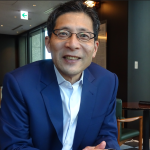
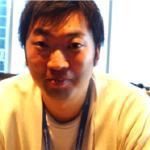
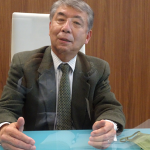
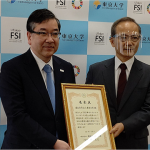
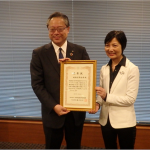

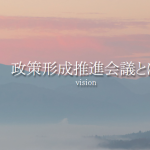
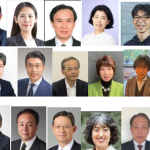
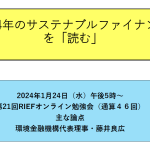
 Research Institute for Environmental Finance
Research Institute for Environmental Finance